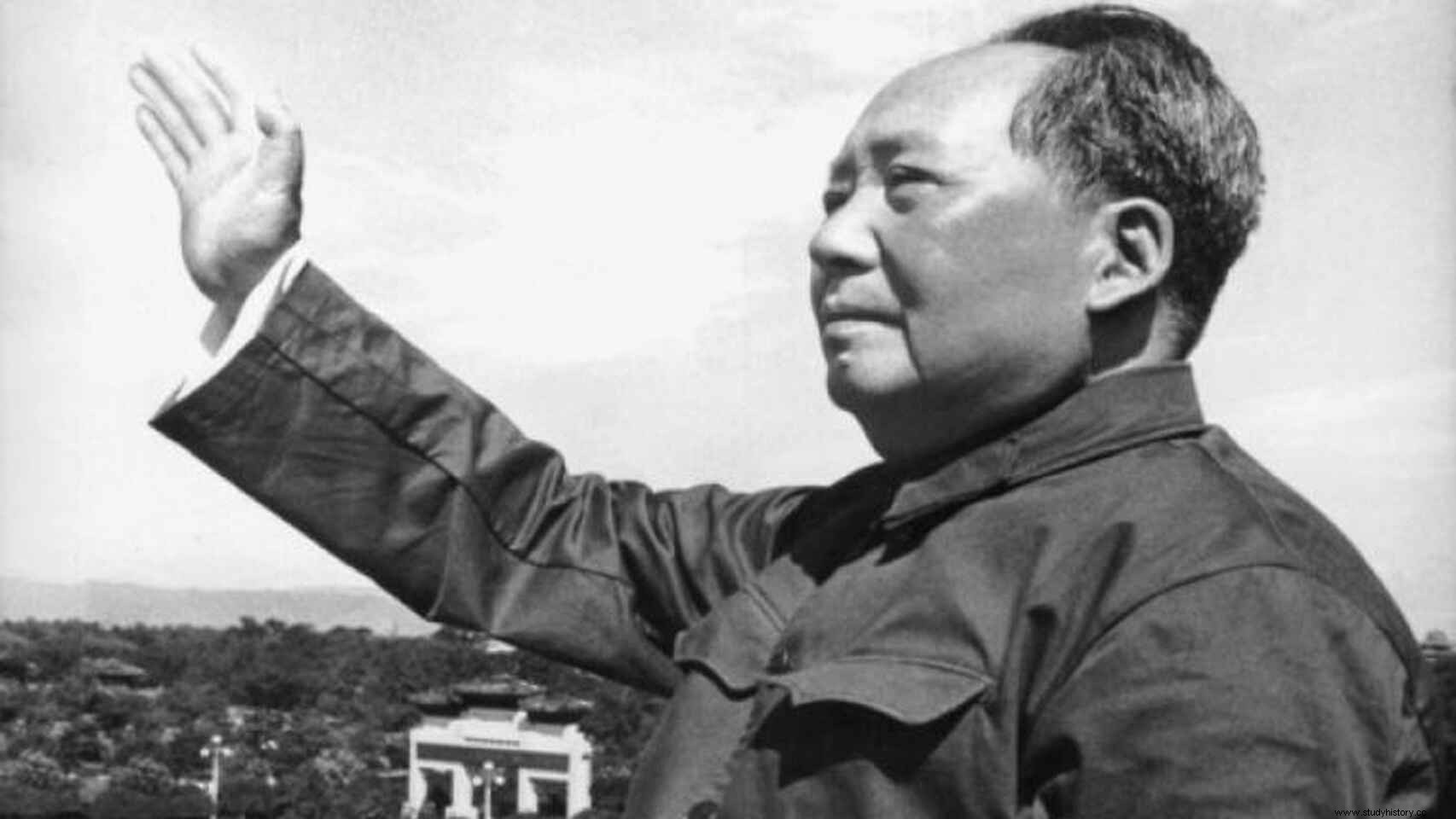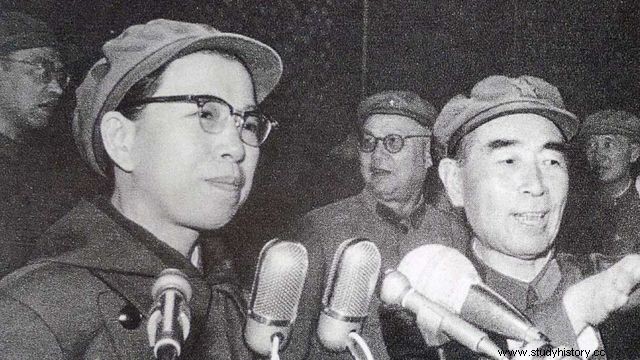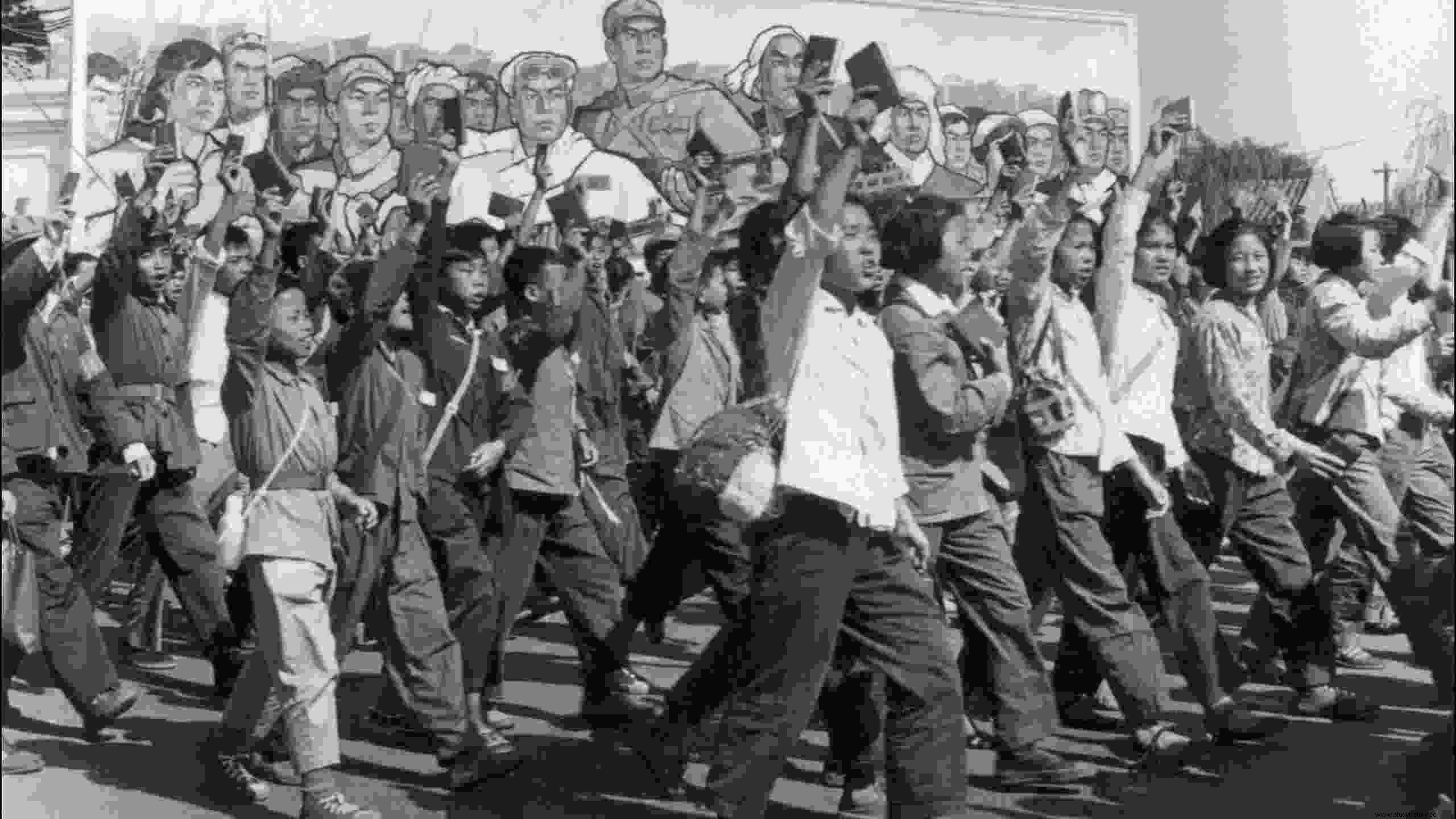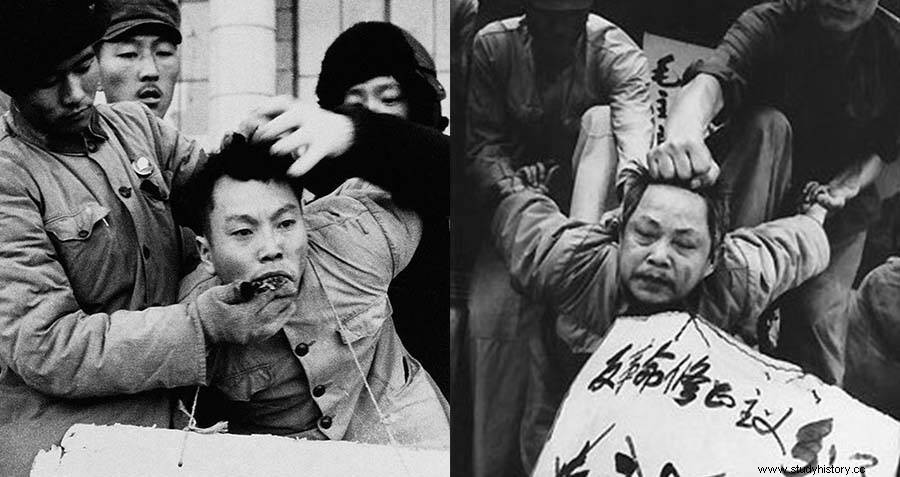China's current president, Xi Jinping, recently enforced certain changes that many fear will lead to another cultural revolution. The events of the first cultural revolution, from the talks on communism to the red guards, justify the fear. However, there is some speculation about President Xi Jinping's motives for the changes.
For ten years, between 1966 and 1976, they met in China with different mindsets, religions and ethnicities harsh retaliation. They chose to follow a different way of thinking, different from Mao Zedong, a member of China's Communist Party. The spread of his views led to public humiliation, deaths, massacres, and an example of cannibalism.
To this day, China's Cultural Revolution is a dark mark in China's history.
Mao Zedong and the Cultural Revolution

Also known as The Great Proletarian Cultural Revolution, it was launched in 1966 by Mao Zedong, a member of the Communist Party. He believed that the leaders of the Communist Party were taking the party, along with China, in the wrong direction. He thought they were unfocused. Furthermore, he felt that the party's views were too revisionist, and supported revision or modification. This led to his fear of by-social formation in China's traditional society. In addition, he viewed negatively the emphasis on expertise rather than ideological purity.
The purpose of the Cultural Revolution, a political and social movement, was to preserve the 'true' communist ideology. To do so required the destruction of all things related to capitalist and traditional elements.
On the other hand, along with preserving true communism, he saw the Cultural Revolution as a way of repeating his authority over the Chinese government.
Mao's position in government was weakened by his campaign, The Great Leap Forward.
His campaign sought to turn China's agricultural base into an industrial one. The introduction of a municipal system resulted in the organization of farmers, as well as a ban on private agriculture. However, the campaign failed. It did not produce enough for the necessary yields, which led to an economic crisis. Famine allowed, and then 56 million deaths, of which three million were suicides.
This is probably the motivation he needed to get rid of his opponents in the Communist Party. He knew that his members were planning to marginalize him. Therefore, he appealed to his supporters to join him in the Cultural Revolution.
However, this movement took a new approach. Instead of relying only on his official power, he addressed the masses of the Chinese public. With their help, he asserted his control over the Communist Party, and therefore China.
The four goals of the Cultural Revolution
Mao's four goals were to restore his control and to prove that China was a true communist state.
First, the designated successors to the Chinese Communist Party would be replaced by leaders who are more loyal to Mao's way of thinking.
Secondly, it would lead to the creation of the Chinese Communist Party.
Third, China's youth will have a revolutionary experience.
Fourth, the achievement of specific policy changes. By doing so, the education, health and cultural systems would become less elitist.
When Mao achieved these goals, Mao believed that the remnants of capitalist and traditional elements would be removed from Chinese society. In addition, it would reintroduce Maoism or Mao Zedong thought as the dominant ideology of the People's Republic of China (China).
Remarkable figures in the Cultural Revolution

Jiang Qing
Fourth wife of Chairman Mao, she was one of the few people he trusted.
However, the Communist Party looked down on their marriage, and saw that a former actress did not want any part in politics. Therefore, she agreed to her non-involvement in politics for the next 20 years.
It took a turn when the Cultural Revolution began.
In 1963 she became more politically active. She sponsored a theatrical movement, jingxi (Beijing Opera). In addition, she supported a ballet form that combined traditional Chinese art forms with proletarian themes. It soon grew to become an attack on the cultural intellectual figures in China. Furthermore, it continued to grow during the Cultural Revolution.
In 1966 she gained not only power but influence. She became known for strong speeches at mass meetings. In addition, her involvement with the Red Guards, Mao's followers, grew.
All in all, she oversaw the total repression of traditional and cultural activities in China.
Lin Bao
Lin Bao became Minister of Defense of China in September 1956.
With his new position he ordered the reformation of the army. This led to intensified political training of the solidarity and an upgrade of their military training. Using a combination of professional expertise and political awareness (according to Mao's teachings), the army became an example. In addition, they became a model for the Chinese Communist Party and Chinese society.
Gang of Four
These were for individuals, influential members of the Chinese Communist Party. They remained the backbone of the Cultural Revolution after Mao's death. However, there is speculation as to what their position was.
The members were Jiang Qing and her staff, Wan Hangwen, Yao Wenyuan and Zhang Chunqiao.
In addition, it is unclear how much power they could exercise during the Cultural Revolution, regarding decisions and politics.
Although they tried to take control after Mao's death, no one took power. Mao's chosen successor, however, was the reformist Hua Guofeng. Consequently, he disgraced the necessity of the Cultural Revolution. He ordered the arrest of the Gang of Four. They were cleansed and imprisoned.
Some say that it was after the arrest that the Cultural Revolution really ended.
The Red Guards

Chairman Mao encouraged the nation's radical youth.
Students as young as elementary school heard his call.
This call spread the word to cleanse the "unclean" elements of Chinese society. He talked about reviving the revolutionary spirit in China, the same one that led to their civil war victory 20 years earlier and what formed China. Therefore, it led to the attack on the Chinese Communist Party leadership, a way to restore Chairman Mao's control.
However, their motivations are under two speculations:
- They had a sincere commitment to the teachings of the Maoists. They took his quotes mentioned in the Little Red Book seriously. For example, "It's right to rebel" and "Bomb the headquarters".
- They embraced violence and contempt for the status quo.
The Red Guards in the Cultural Revolution
Initially, the first groups of red guards were students, ranging from primary school to university. After the Cultural Revolution gained momentum, young workers and farmers joined. Soldiers and older workers soon became red guards.
Their first tasks included enforcing communist teachings and freeing the nation from the four old ones:old customs, old culture, old habits and old ideas.
Between June and July 1966, they held meetings, formed associations and adopted names, such as 'Red Flag Combat Team' and 'Safeguard Mao Zedong'.
Their first targets were Buddhist temples, churches and mosques. The red guards either destroyed the buildings or converted them for other uses. In addition, they burned sacred texts, religious statues and other works of art.
Together with Buddhist temples, they also destroyed antiques and ancient texts.
In short, all objects related to China's pre-revolutionary past were destroyed.
The red guards even went so far as to stop entire animal populations. For example, the Pekingese dog. Associated with the old imperial regime, the breed would have been extinct if not for the few who survived.
To the Chinese people, they persecuted anyone who was considered 'counter-revolutionary', 'bourgeois' or 'right-wing'.
On August 1, 1966, according to a return letter to a Red Guard, Mao Zedong enthusiastically supported the Red Guards.
'Match Sessions'
The 'battle sessions' are where the red guards abused and humiliated publicly accused of capitalist thoughts. In addition to their primary targets, they attacked those wearing foreign clothing, including Catholic nuns. Many died or ended up in retraining camps for years. They targeted teachers, monks, rich farmers and other educated people. Between August 1966 and September 1966, 1,800 people died.
The 'right-wingers' experienced the worst public humiliation. Parade through the streets of their cities, carry mocking posters around their necks, and stand in front of supporters of Chairman Mao.
48 million yuan of private property was seized and handed over to the state. In addition, the red guards raided private homes and allowed the residents to be physically beaten.
The public tactics of humiliation became increasingly violent. Along with the thousands killed, several committed suicide.
By the end of 1966, they felt secure enough to target municipal and provincial authorities, along with high-profile political figures.
What Mao and his Communist Party failed to predict the outcome of the violence. It affected the social and intellectual life of the country. Also, with the country's leadership put to the test, the economy weakened.
The 'Down by the Countryside' movement
The destruction caused by the red guards did not go unnoticed by Mao and the Communist Party. With social and economic life disrupted, China was in chaos in February 1967. It managed to reach army generals, who spoke out against the abundance of actions for the Cultural Revolution.
In addition, the red guards lit up against each other and fought in the streets. They fought for power over each other, each claiming to be the true representative of Maoism.
Furthermore, Jiang Qing encouraged the Red Guards to attack weapons from the People's Liberation Army. She persuaded them to replace the army if necessary.
In December 1968, Mao saw that the Cultural Revolution was out of control. The economy was already weakened by the great leap forward. The violent acts only made it worse.
Therefore, he came to the decision to send the young urban Red Guards to the countryside. There they worked on farms and learned from the peasantry.
Mao later claimed that the experience ensured that the youth understood the Communist Party's roots on the farm. However, the real goal was to thin out the presence of the red guards and spread them across the country. It was the only possible way to prevent further chaos they could cause. Hence the "Down by the Countryside" movement.
Unfortunately, the decision came too late. The Red Guards destroyed most of China's cultural heritage
The massacres of the Cultural Revolution

Mao Zedong introduced the five black categories, people who became the main targets of the Red Guards and other supporters:
- Homeowners.
- Rich farmers.
- Counter-revolutionaries.
- Bad impact / elements.
- Conservatives.
Many people in these categories lived among themselves in different provinces of China. When Mao gave his blessing to the Red Guards, they violently opposed anyone suspected of disloyalty. This led to some of the most horrific massacres in China's history.
The Guangxi Cultural Revolution Massacre
From 1967 to 1979, Chairman Mao's supporters caused 100,000 to 150,000 deaths in Guangxi Province. Their preferred methods were beheading, beatings, live funerals, stoning, cooking, defecation, to name a few.
In addition, there were cases of cannibalism. Officials tore hearts and lives from their opposing victims, dead or alive.
The most notorious attack of cannibalism was a teacher beaten by her elementary school students in the schoolyard. Later they tore her organs from her body, boiled them and ate them in the same schoolyard.
Researchers estimate that 417 individuals were consumed.
At the end of the Cultural Revolution, those involved in the deaths and cannibalism were arrested and tried.
The incident in Inner Mongolia
Between 1967 and 1979, there was a political cleansing in Inner Mongolia, a region of China. Over a million people were suspected of being part of the Inner Mongolian People's Revolutionary Party.
As a result, Mao's followers arrested 346,000, persecuted to death or directly killed 16,222 and permanently injured or disabled 81,000 people.
At the end of the Cultural Revolution, the Communist Party considered the incident a mistake. They rehabilitated the victims, but those responsible were not held accountable.
Red August
One of the most notorious massacres in China's history is the Beijing Massacre, or Red August. This was a series of massacres throughout Beijing, one of the first student-led movements in the fighting for Mao.
Between August and September 1966, Mao's supporters left 1772 dead, ransacked 33,695 homes and forced 85,196 families to leave the city.
Then Mao publicly opposed public intervention in the students' actions. In addition, he demanded that they be protected instead of being arrested.
Methods used by the Red Guards were beating, whipping, choking, boiling and beading, to name a few.
Other infamous massacres during the Cultural Revolution are:
- The Massacres in Guangdon.
- The Yunnan Massacre.
- the Hunan massacre.
- the Ruijin massacre.
The aftermath of the Cultural Revolution

Whether it was the arrest of the Gang of Four or the death of Mao Zedong, the Cultural Revolution ended in 1976.
There are no confirmed numbers of deaths. Some say it varies around hundreds of thousands, possibly millions. Those who survived were imprisoned, confiscated, tortured and generally humiliated.
Between 1966 and 1976, schools in China did not function. Therefore, formal education avoided an entire generation. In addition, educated individuals and professionals were targeted for retraining. With the years they spent inside the retraining camps, there was no one to enlighten the students' minds other than The Little Red Book, which gave the speeches and transcripts to Chairman Mao.
Antiques and objects, symbols of "old thinking", were destroyed. Historical and religious texts burned to ashes.
It is a constant reminder of the deliberate destruction in which the Red Guards attacked and destroyed the ancient culture and history of China.
Many say that Chinese President Xi Jinping is cracking down on factors in Chinese society, such as technology and entertainment, for control. He has no goal of suppressing the tradition, but there is still concern about repetition.
This further proves the fear of the destruction of the past, 55 years after its imprint created history.
Peace and quiet are a thousand pieces of gold.
- Chinese proverb.
